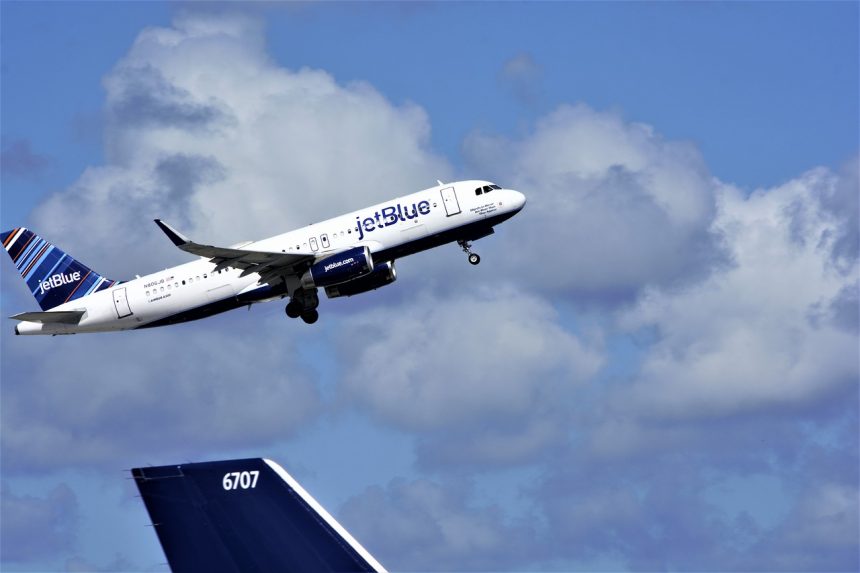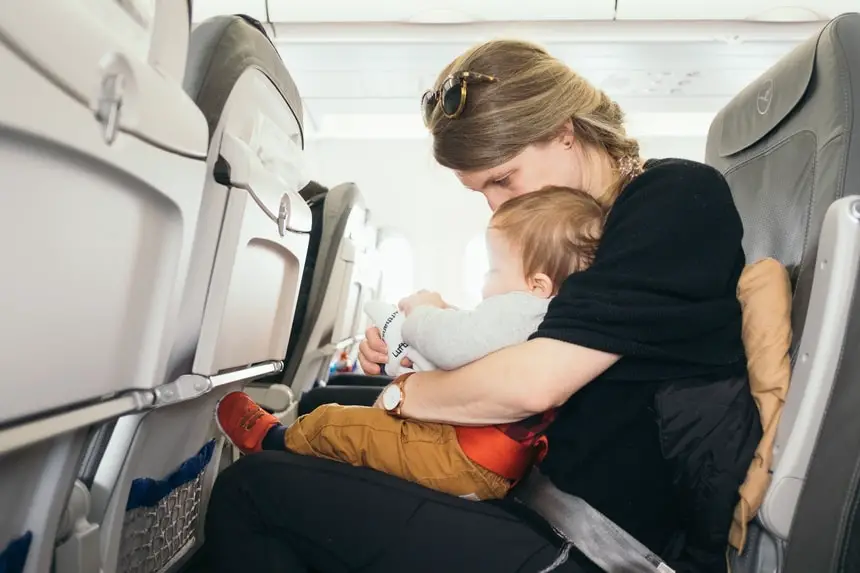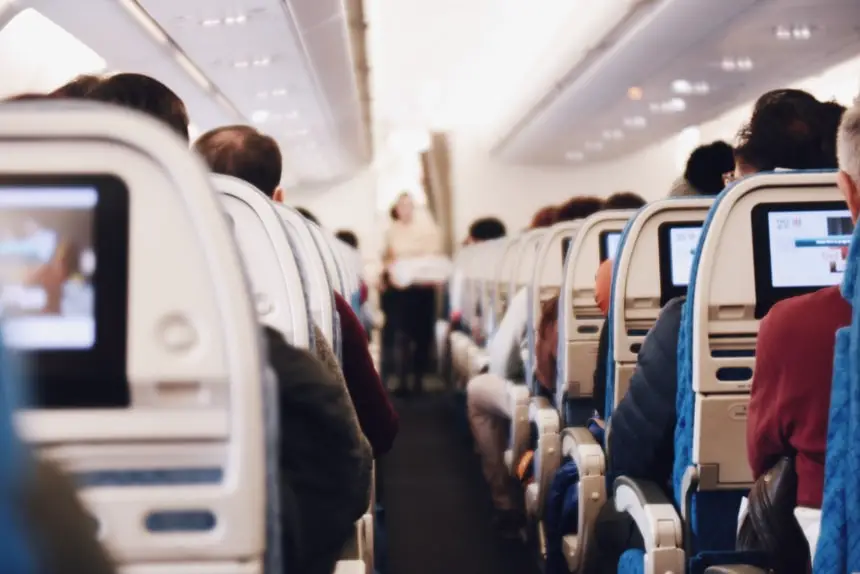Airlines today are being bashed online with very few managing to uphold a decent reputation. Most domestic airlines have a torrent of Twitter users tearing them down at any given point.
Even if you do not complain about it online, there is a good chance you do not view flying favorably.
So, to find an airline that has a loyal customer base and good reviews is like trying to find a needle in a haystack. Thankfully, JetBlue changed that.
JetBlue became the fifth largest passenger carrier in a few short years after entering the airline market and this New York native airline can credit a lot of its success to a well thought out marketing strategy.
While other airlines are dealing with mergers and bankruptcy, how did JetBlue manage to not only make a profit but beat Wall Street expectations with its results?

The Beginning of JetBlue
JetBlue’s first flight was taken in the year 2000 and it is now entering its third decade in the airline market. What JetBlue succeeds in is keeping customers and investors happy which is no small task.
It started off by following Southwest’s low-cost budget airline approach with the added bonuses that normally only come with luxury airlines such as in-flight entertainment.
This was a huge undertaking. It meant allowing customers to enjoy discounted rates but also delivering an experience that would be associated with a luxury airline.
This meant that its brand image was of huge importance from day one and everything from what they offer to the name of the airline was scrutinized. For instance, JetBlue was initially supposed to be named Taxi after the infamous New York cabs but that idea was dropped due to a lot of negative feedback from big investors like JP Morgan.
JetBlue needed to make itself known as the budget airline that cared about its customers and only content marketing could help with that. But with the analysis, reviewing, and bad decisions, content marketing is no walk in the park.
So how did they do it? How did JetBlue manage to win over the fussiest of customers?
The Jettitude Culture
If you are a JetBlue employee, the way you start your career is going to be very different in comparison to any other airline.
JetBlue has what they call JetBlue University to get you started which is where every employee begins their time with JetBlue whether they are a pilot or an air hostess.
You are often greeted by the CEO and there is a certain casualness to the atmosphere.
The very transparent discussion about what is expected from employees and what they can expect from JetBlue is a great way to hit things off.
A brief discussion about the company’s culture, how they see themselves moving forward and how they treat their customers gives future employees a better understanding of what lies ahead but more than anything else it builds a relationship with the employees.
Before an employee begins training for their position, this is how they spend their first two days- understanding JetBlue and how its mind works.
This involves what JetBlue calls ‘the Bs’ which are the main principles every JetBlue employee needs to follow. Most of these characteristics are extremely simple but what it comes down to is treating the customer like family.
To be kind, courteous and engaging is what is asked off from every employee.
For a potential JetBlue employee, it is less important to have a work history in the airline field and more important to have a previous employer saying you were the customers’ favorite.
What JetBlue found out pretty fast is that what your staff thinks about the company will inevitably be what your customers think of it.

FlyBabies
One of the most annoying and dreaded elements of flying is without a doubt having to sit next to a child that is crying non-stop with no real end in sight. We have all dealt with it and it is never pretty.
But what if you got a reward at the end of it? Wouldn’t that make flying with a child next to you so much easier?
While JetBlue could not stop children from crying through a six-hour flight, they could make it more bearable by starting a reward system.
JetBlue started rewarding passengers with flight credit whenever a child cried. Their ‘FlyBabies’ campaign was immensely successful and it made people want to fly with them.
More than anything, it made it evident to flyers that JetBlue cared about everyone.
The marketing video that advertised it was met with appreciation and people even started to look forward to babies crying.
Instead of changing the situation, they just made it work better for them.
The Rules are bendable
As a JetBlue employee, you are given a certain amount of power that you would not be given in any other airline. If you can justify a decision that you took as being backed with one of JetBlue’s values, no further questions are asked.
So, if an air hostess thought giving a passenger free drinks or an upgrade was a good idea (or if it won them over), JetBlue trusts their decision.
While other airlines hover over their staff and make sure they are abiding by every rule, JetBlue trusts theirs and it pays off.
A trusting work environment is one of the big reasons JetBlue works.
By giving their staff challenges instead of tasks, JetBlue wins over employees that love their customers.
Pick your battles
While a lot of American Airlines had decided to go international, JetBlue remained domestic for the most part. While this may sound like a negative, according to Forbes it is actually one of the reasons JetBlue outperformed.
Due to the strength of the dollar in 2015, travel for international customers had become more difficult causing airlines like Delta to suffer major losses since they have such a strong international presence.
This means that the investors aren’t very happy and stock prices are suffering.
JetBlue, on the other hand, benefitted at the exact same time. While its competitors were failing, the JetBlue stock went up by 56% since their presence in the domestic market went unaffected. Lower oil prices only benefited them further.
So even with their constant expansion and increase in flight paths, JetBlue actually increased its overall revenue.
The low-cost structure meant they could increase their profit margins with even more ease.
HumanKinda
https://www.youtube.com/watch?v=qqfuLGgiFHw
Would you fly to Puerto Rico right now and drop everything if someone handed you a ticket?
That was how the HumanKinda video content campaign started. Comedian and actor Sam Richardson went around asking people whether they could pause their life for just a bit and take a break.
The mini documentary included a sociologist’s viewpoint on the way we live our lives and some real-world people with real-world problems talking about how they can barely keep up.
By talking about something that almost all of us feel, JetBlue was able to make us sit down and listen to an advertisement.
Because the truth is we do keep pushing ourselves with no real break and if someone offers you a trip to Puerto Rico, shouldn’t you just take it?
With a lot of airlines viewing their customers more as statistics than people, it was a great idea and worked well with their audience. While most ads tend to seem staged and fake, this mini documentary that captured real emotions with a sprinkle of humor worked.
The focus on getting our humanity back and slowing down a little was something most people could relate to.
This also meant taking a breather and maybe traveling a little more…with JetBlue of course.

Relationships with frequent flyers
https://www.youtube.com/watch?v=6ozvWY7Srs8
In an industry dominated by bad reviews and angry social media users, having a couple of good reviews could do you good. While JetBlue has tons of those, it does not stop there. A frequent flyer for the airline went public saying JetBlue and him shared what could only be compared to a love affair.
The video follows Paul Brown, a JetBlue frequent flyer, talking about his favorite experience with the brand and the day he knew he was in love. Paul blasted out a tweet saying that he would love a Starbucks mocha during his upcoming JetBlue flight and they paid attention.
During his flight, Paul was greeted by an air hostess who got him the Starbucks he craved and in his words that started what could only be described as a ‘love affair.’
We tend to look at companies as cold, money craving organizations that have little to no heart so when we as consumers are treated as valued human beings, it can cause a lasting effect.
While other airlines sunk millions of dollars into meaningless campaigns, JetBlue managed to land themselves a life long customer with one cup of coffee.
More than anything else, it was not just one flyer they bagged with this simple act of kindness.
The smart shopper of today trusts fellow buyers far more than the brand itself so a simple video from a JetBlue fan increased trust.
Flight Etiquette
If you keep track of JetBlue’s content marketing you notice that they will often tap into humor as their preferred way of connecting with an audience. It works.
Instead of the classic salesman pitch, wouldn’t you rather have a laugh?
JetBlue started a series of video ads that talked about the most common flight problems and how to handle them. Whether it is sitting near a window or not bringing stinky food on to a plan, JetBlue talked about all of it.
While a lot of their competitors choose to only focus on the benefits of flying, talking about the not-so-great parts and making them just a little bit better with some humorous videos worked well.
Potential customers liked them because it made JetBlue seem more honest and trustworthy than the airlines that focused only on the good.
Focusing on the negatives of flying was a content marketing strategy that worked simply because of the way that it was played.
It also made customers aware that unlike other airlines, JetBlue actually listens to the complaints instead of just the praise.

‘If you wouldn’t take it on the ground, don’t take it in the air’
This slogan that JetBlue is known for also manages to take their competitors down a notch by focusing on the lack of amenities and the extra fees that oh so many budget airlines come up with.
Once again focusing on building trust and a luxury brand image for half the price, the slogan is a clever but simple content marketing idea.
https://www.youtube.com/watch?v=EPurzKVTlU4
Another similar idea, ‘Reach Across the Aisle’ focused on the time JetBlue took a plane full of passengers on a destination holiday to a place that they choose collectively.
The key takeaway from most of JetBlue’s marketing techniques is that social media is really important to them. Whether it is a facebook video or a tweet, it is where they truly shine as a digital brand.
They are always ready to address grievances or praise on Twitter and if you @ them, they are one of the few companies that you can expect a response from.
They have been known to keep an eye out for any mention of the brand on social media platforms and engage with their audience as much as possible.
The brand has about 30 people who monitor social media 24/7.
This isn’t something that hasn’t been done before. Most companies have social media departments that handle their accounts but with JetBlue, a complaint found on Twitter is dealt with by the person who finds it.
Giving the employee the ability to do what they believe is necessary instead of passing on the complainant to a whole new department is what keeps all of their customers happy.
A lot of JetBlue’s strategy is exactly what their phrase entering the market evokes:
Bringing humanity back to air travel.
The JetBlue Twitter Team: How it works
When JetBlue found out just how important Twitter was to their marketing strategy and how they could reach millions of customers virtually, they went all in and never looked back.
According to HubSpot, three teams co-dependently handle the tweets that mention JetBlue. One of these teams is the customer service team that handles customers via tweets.
Instead of just replying to every single Twitter mention, JetBlue intended on connecting with their customers and getting long-term value out of it.
The decision to hire only customer service employees to handle Twitter is a smart one for multiple reasons.
Instead of simply focusing on how many people they can communicate with it, they focus on how they are communicating. Are they adding any value to their customer’s JetBlue journey?
If a tweet can do that, their job is done.

Defy expectations
The common expectation from an airline company is to be left frustrated by a problem if one arises. JetBlue’s head-on approach to problems turns them into content marketing dynamite.
In a recent interview with Mashable, Marty St. George who is the Senior Vice President of Marketing at JetBlue agreed.
He talked about how he focuses on advertising agencies that can find him on Twitter because JetBlue is a digital brand.
“Most of the agencies we went to had a very old school view of how advertising worked….. And really, for JetBlue, none of those worked very well, because we have fundamentally a digital brand in that the overwhelming majority of customers come through jetblue.com”, Marty explained.
Building conversations with customers and solving their problems on a social media platform like Twitter is actually becoming one of JetBlue’s key marketing techniques.
Another great example would be the customer that complained about how his VPN would not connect on Twitter. JetBlue’s team reached out to the satellite provider and then to the complainant as well to make sure he was heard.
In the end, they solved his problem and won him over.
Listen to your customers. Ask them for advice.
Sending out surveys on a regular basis is something JetBlue believes is important as well. What it really comes down to is it is just another way to listen to the customer and learn from them.
JetBlue sends out about 12 million surveys regularly to a third of its 36 million customer base. On average they receive around 4 million replies which just means more data to pour over.
The customer comes first mentality is taken to new heights.
When the brand found that customers that love JetBlue choose other companies for intercontinental flights because of certain benefits like WiFi and more comfort, JetBlue used this new data to launch two brand new products.
Mint and Fly-fi were introduced to combat these problems and it worked. This meant bringing in a new sector of elite clients from key areas like Los Angeles that were initially choosing other airlines.
Mint was the newly introduced upgrade available that provided lie-flat seats, a branded amenities kit, suites with doors and bigger screens for customers that choose to go for it while Fly-fi was their free Wi-Fi that they made available.
This was in no way a cheap solution but it was backed by data and that was enough for JetBlue.
It even included adding a whole new satellite but it was worth it in the end because it meant more customers and an even better reputation.

Key Takeaways
A lot of what JetBlue does can simply be narrowed down to listening to their customers AND staff.
Employees are giving the power to do what they think is right and know their company trusts and backs them.
Customers have staff that will do whatever it takes to make them happy.
Whether it is a team of thirty people monitoring their social media or 4 million surveys telling them why potential customers may go for another airline, JetBlue knows the solution is in the data.
A lot of airlines choose to continue with the traditional route but JetBlue’s digital approach has paid off.
Making sure your customer’s grievances are heard and being ‘kinda human’ is the answer to winning over all of those potential customers.
It worked for JetBlue.

